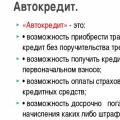Official statistics of HIV, AIDS in Russia
At the beginning of 2017 the total number of HIV cases among Russian citizens has reached 1 114 815 people(in the world - 36.7 million HIV-infected). Of them died for different reasons 243 863 HIV-infected according to the monitoring form of Rospotrebnadzor "Information on measures for the prevention of HIV infection, hepatitis B and C, identification and treatment of HIV patients." In December 2016, 870,952 Russians were living with a diagnosis of HIV infection. July 1, 2017 the number of HIV-infected in Russia was 1 167 581 people, of whom died for various reasons 259 156 people ( in the 1st half of 2017 the year has already died 14 631 HIV-infected that 13.6% more than in 6 months of 2016.). Population prevalence rate RF HIV infection in 2017 year was 795,3 infected with HIV per 100 thousand of the population of Russia.
In 2016... It revealed 103 438 new cases of HIV infection among Russian citizens (excluding those identified anonymously and foreign citizens), which is 5.3% more than in 2015.Since 2005, the country has registered an increase in the number of newly detected cases of HIV infection, in 2011-2016 annual growth averaged 10%. HIV incidence rate in 2016 made up 70.6 per 100 thousand population.
In terms of the rate of growth in the incidence of HIV infection, Russia is in third place after the Republic of South Africa and Nigeria.
For the 1st half of 2017 identified in Russia 52 766 HIV-infected citizens of the Russian Federation. HIV incidence rate in 1st half of 2017 made up 35,9 cases of HIV infection per 100 thousand population. Most of all new cases in 2017 were detected in Kemerovo, Irkutsk, Sverdlovsk, Chelyabinsk, Tomsk, Tyumen regions, as well as in the Khanty-Mansiysk Autonomous Okrug. Increased growth rate of new cases HIV infection in 2017(but the overall incidence of HIV infection is low) is observed in the Vologda region, Tyva, Mordovia, Karachay-Cherkessia, North Ossetia, Moscow, Vladimir, Tambov, Yaroslavl, Sakhalin and Kirov regions.
The increase in the total (cumulative) number of registered cases of HIV infection among Russian citizens from 1987 to 2016.
HIV in regions and cities
In 2016, according to the incidence rate in the Russian Federation the following regions and cities were in the lead:
- Kemerovo region (228.8 new cases of HIV infection were registered per 100 thousand population - total 6 217 HIV-infected), incl. in the town Kemerovo 1,876 HIV-infected.
- Irkutsk region (163.6% 000 - 3 951 HIV-infected). In 2017, in the Irkutsk region for 5 months, 1,784 new HIV-infected people were identified. In 2016 in the city Irkutsk registered 2 450 new HIV infections, in 2017 - 1 107. Almost 2% of the population of the Irkutsk region are infected with HIV.
- Samara region (161.5% 000 - 5 189 HIV-infected, incl. in the city of Samara 1,201 HIV-infected), for 7 months of 2017 - 1,184 people. (59.8% 000).
- Sverdlovsk region (156.9% 000 - 6 790 HIV-infected), incl. in the city of Yekaterinburg 5,874 HIV-infected (the most HIV-infected city in Russia / or are they good at revealing? ed./).
- Chelyabinsk region (154.0% 000 - 5 394 HIV-infected),
- Tyumen region (150.5% 000 - 224 people - 1.1% of the population), in the 1st half of 2017, 1,019 new cases of HIV infection were detected in the Tyumen region (an increase of 14.4% compared to the same period last year, then 891 HIV-infected were registered), incl. 3 teenagers. The Tyumen region is one of the regions where HIV infection is recognized as an epidemic.
- Tomsk region (138.0% 000 - 1 489 people.),
- Novosibirsk region (137.1% 000) regions (3 786 people.), incl. in the town Novosibirsk 3 213 HIV-infected.
- Krasnoyarsk Territory (129.5% 000 - 3 716 people.)
- Perm Territory (125.1% 000 - 3 294 people.)
- Altai Territory (114.1% 000 - 2 721 people.)
- Khanty-Mansi Autonomous Okrug (124.7% 000 - 2,010 people)
- Orenburg region (117.6% 000 - 2 340 people), in 1 sq. 2017 - 650 people (32.7% 000).
- Omsk region (110.3% 000 - 2 176 people.), for 7 months of 2017, 1184 cases were detected, the incidence rate was 59.8% 000.
- Kurgan region (110.1% 000 - 958 people.)
- Ulyanovsk region (97.2% 000 - 1 218 people.), in 1 sq. 2017 - 325 people (25.9% 000).
- Tver region (74.0% 000 - 973 people.)
- Nizhny Novgorod region (71.1% 000 - 2 309 people.) area in 1 sq. 2017 - 613 people (18.9% 000).
- Republic of Crimea (83.0% 000 - 1 943 people),
- Khakassia (82.7% 000 - 445 people),
- Udmurtia (75.1% 000 - 1 139 people.),
- Bashkortostan (68.3% 000 - 2 778 people.), in 1 sq. 2017 - 688 people (16.9% 000).
- Moscow (62.2% 000 - 7 672 people)
Note:% 000 - the number of HIV-infected per 100 thousand population.
Leading cities in terms of the number of identified HIV-infected and the incidence of HIV infection: Yekaterinburg, Irkutsk, Kemerovo, Novosibirsk and Samara.
The regions of the Russian Federation most affected by HIV infection.
Most significant growth (rate, growth rate of new HIV cases per unit of time) morbidity in 2016 was observed in Republic of Crimea, Karachay-Cherkess Republic, Chukotka Autonomous Okrug, Kamchatka Territory, Belgorod, Yaroslavl, Arkhangelsk Regions, Sevastopol, Chuvash, Kabardino-Balkarian Republics, Stavropol Territory, Astrakhan Region, Nenets Autonomous District, Samara Region and Jewish Autonomous Region.
The number of newly diagnosed cases of HIV infection among Russian citizens in 1987-2016

Affection HIV infection of the population of Russia as of December 31, 2016 amounted to 594.3 per 100 thousand people Cases of HIV infection have been registered in all constituent entities of the Russian Federation. In 2017, the incidence rate was 795.3 per 100 thousand people.
A high prevalence of HIV infection (more than 0.5% of the total population) was registered in the 30 largest and mostly economically successful regions, where 45.3% of the country's population lived.
Dynamics of HIV prevalence and morbidity rates in the population of the Russian Federation in 1987-2016

To the most affected constituent entities of the Russian Federation relate:
- Sverdlovsk Region (1647.9% of 000 people living with HIV are registered per 100 thousand of the population - 71 354 people. In 2017, there are already about 86 thousand people infected with HIV), including in the city of Yekaterinburg more than 27,131 HIV-infected people were registered, i.e. every 50th resident of the city is infected with HIV Is a real epidemic. Serov (1454.2% 000 - 1556 people). HIV-infected - 1.5 percent of the population of the city of Serov.
- Irkutsk region (1636.0% 000 - 39473 people). Total identified HIV-infected at the beginning 2017 year- 49 494 people, at the beginning of June (almost six months) 2017 year registered 51,278 people diagnosed with HIV infection. V the city of Irkutsk over the entire time, more than 31,818 people have been identified.
- Kemerovo region (1582.5% 000 - 43000 people), including in the city of Kemerovo more than 10 125 HIV-infected patients have been registered.
- Samara region (1476.9% 000 - 47350 people),
- Orenburg region (1217.0% 000 - 24276 people) of the region,
- Khanty-Mansiysk Autonomous Okrug (1201.7% 000 - 19550 people),
- Leningrad region (1147.3% 000 - 20410 people),
- Tyumen region (1085.4% 000 - 19,768 people), as of July 1, 2017 - 20,787 people.
- Chelyabinsk region (1079.6% 000 - 37794 people),
- Novosibirsk region (1021.9% 000 - 28227 people) of the region. May 19, 2017 in the city of Novosibirsk registered more than 34 thousand. HIV-infected - every 47 resident of Novosibirsk has HIV (!).
- Perm Territory (950.1% 000 - 25030 people),
- St. Petersburg (978.6% 000 - 51,140 people),
- Ulyanovsk region (932.5% 000 - 11728 people),
- Republic of Crimea (891.4% 000 - 17000 people),
- Altai Territory (852.8% 000 - 20,268 people),
- Krasnoyarsk Territory (836.4% 000 - 23970 people),
- Kurgan region (744.8% 000 - 6419 people),
- Tver region (737.5% 000 - 9622 people),
- Tomsk region (727.4% 000 - 7832 people),
- Ivanovo region (722.5% 000 - 7440 people),
- Omsk region (644.0% 000 - 12,741 people), as of August 1, 2017, 16,099 cases of HIV infection were registered, the prevalence rate was 813.7% 000.
- Murmansk region (638.2% 000 - 4864 people),
- Moscow region (629.3% 000 - 46,056 people),
- Kaliningrad region (608.4% 000 - 5941 people).
- Moscow (413.0% 000 - 50909 people)
Age structure
Highest incidence HIV infection of the population is observed in the group 30-39 years old, 2.8% of Russian men aged 35-39 lived with an established diagnosis of HIV infection. Women become infected with HIV at a younger age, already in the 25-29 age group, about 1% were infected with HIV, the proportion of infected women in the 30-34 age group is even higher - 1.6%.
Over the past 15 years, the age structure among newly diagnosed patients has radically changed. In 2000, 87% of patients received a diagnosis of HIV infection before the age of 30. The share of adolescents and young people aged 15-20 years in 2000 accounted for 24.7% of newly diagnosed HIV cases; as a result of the annual decrease in 2016, this group was only 1.2%.
Age and gender of HIV-infected.

HIV infection was predominantly detected in Russians aged 30-40 (46.9%) and 40-50 (19.9%), the proportion of young people aged 20-30 fell to 23.2%. An increase in the proportion of newly diagnosed cases was also observed in older age groups, and cases of sexual transmission of HIV infection in old age became more frequent.
It should be noted that for low testing coverage for adolescents and young people, more than 1100 cases of HIV infection are registered annually among people aged 15-20 years. According to preliminary data the largest number of HIV-infected adolescents (15-17 years old) was registered in 2016 in Kemerovo, Nizhny Novgorod, Irkutsk, Novosibirsk, Chelyabinsk, Sverdlovsk, Orenburg, Samara regions, Altai, Perm, Krasnoyarsk territories and the Republic of Bashkortostan. The main cause of HIV infection among adolescents is unprotected sex with an HIV-infected partner (77% of cases among girls, 61% among boys).
The structure of the deceased
In 2016, 30 550 (3.4%) patients with HIV died in the Russian Federation (10.8% more than in 2015) according to the monitoring form of Rospotrebnadzor “Information on measures to prevent HIV infection, hepatitis В and С, identification and treatment of HIV patients ”. The highest annual lethality was registered in the Jewish Autonomous Region, the Republic of Mordovia, the Kemerovo Region, the Republic of Bashkortostan, the Ulyanovsk Region, the Republic of Adygea, the Tambov Region, the Chukotka Autonomous Okrug, the Chuvash Republic, the Samara Region, the Primorsky Territory, the Tula Region, the Krasnodar and Perm Territories, Kurgan region.
Treatment coverage
Dispensary in specialized medical organizations in 2016 there were 675 403 patients infected with HIV, which amounted to 77.5% of the number of 870 952 Russians living with a diagnosis of HIV infection in December 2016 according to the monitoring form of Rospotrebnadzor.
In 2016, 285,920 patients received antiretroviral therapy in Russia, including patients who were in places of deprivation of liberty. In the 1st half of 2017 received antiretroviral therapy 298 888 patients, about 100,000 new patients were added to therapy in 2017 (most likely, there will not be enough drugs for all, since the purchase was according to the figures for 2016). Treatment coverage in 2016 in the Russian Federation amounted to 32.8% of the number of registered persons diagnosed with HIV infection; among those who were on dispensary observation, 42.3% of patients were covered with antiretroviral therapy. The achieved treatment coverage does not play the role of a preventive measure and does not allow to radically reduce the rate of spread of the disease. The number of patients with active tuberculosis in combination with HIV infection is growing, the largest number of such patients is registered in the regions of the Urals and Siberia.
HIV testing coverage
In 2016, there were tested for HIV 30 752 828 blood samples of Russian citizens and 2,102,769 blood samples of foreign citizens. The total number of tested serum samples from Russian citizens increased by 8.5% compared to 2015, and decreased by 12.9% among foreign citizens.
In 2016, the maximum number of positive results among Russians in immunoblot over the entire history of observation was revealed - 125,416 (in 2014 - 121,200 positive results). The number of positive results in the immunoblot includes those identified anonymously, not included in statistical data, and children with an undifferentiated diagnosis of HIV infection, therefore it differs significantly from the number of newly registered cases of HIV infection.
For the first time, a positive HIV test result was detected in 103 438 patients. Representatives of vulnerable groups of the population in 2016 constituted an insignificant part of those tested for HIV in Russia - 4.7%, but among these groups 23% of all new cases of HIV infection were detected. When testing even a small number of representatives of these groups, it is possible to identify many patients: in 2016, among the surveyed drug users, for the first time, 4.3% were HIV-positive, among MSM - 13.2%, among contact persons during epidemiological investigation - 6.4%, prisoners - 2.9%, STI patients - 0.7%.
Transmission path structure
In 2016, the role of the sexual route of HIV transmission increased significantly. According to preliminary data, among HIV-positive people newly diagnosed in 2016 with established risk factors for infection, 48.8% were infected when using drugs with non-sterile instruments, 48.7% - during heterosexual contacts, 1.5% - during homosexual contacts, -0, 45% were children infected from mothers during pregnancy, childbirth and breastfeeding. The number of children infected with breastfeeding is growing: in 2016, 59 such children were registered, in 2015 - 47, in 2014 - 41 children. In 2016, 16 cases were registered with suspected infection in medical organizations when using non-sterile medical instruments and 3 cases when transfusing blood components from donors to recipients. Another 4 new cases of HIV infection in children were probably related to the provision of medical care in the CIS countries.
Distribution of HIV-infected by infection method.

conclusions
- In the Russian Federation in 2016, the epidemic situation with regard to HIV infection continued to deteriorate and the trend continues in 2017, which may even affect the resumption of the global HIV epidemic, which, according to a UN report in July 2016, began to decline.
- The high incidence of HIV infection remained high, the total number and number of deaths of HIV-infected people increased, and the epidemic's emergence from vulnerable groups of the population into the general population intensified.
- While maintaining the current rate of spread of HIV infection and the absence of adequate systemic measures to prevent its spread, the prognosis for the development of the situation remains unfavorable.
- It is required to intensify organizational and preventive measures to counter the HIV epidemic in the country.




